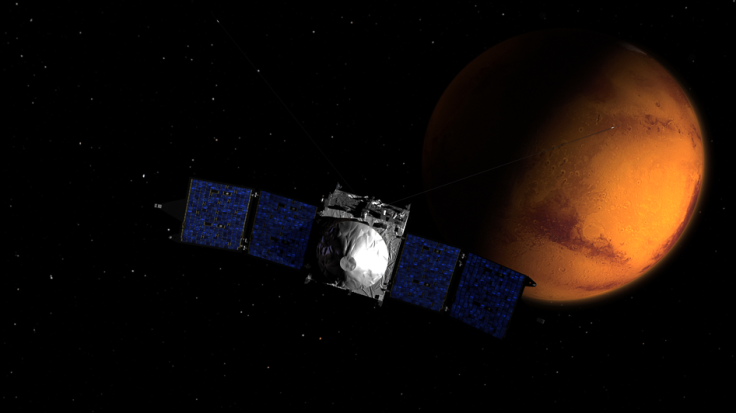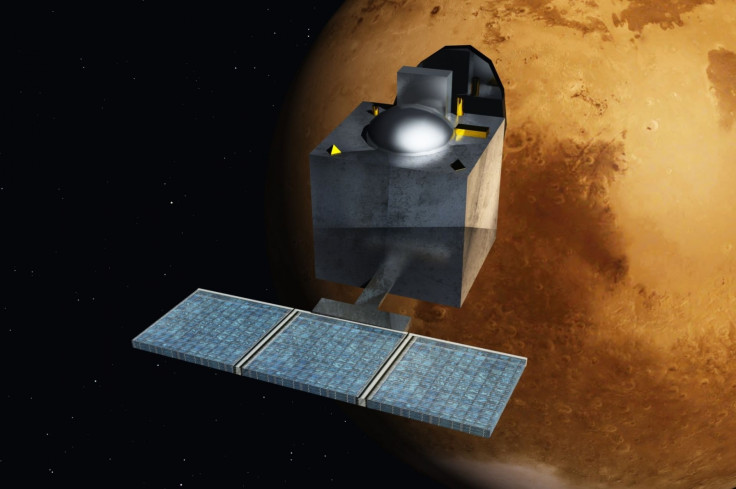Nasa Mars Mission to Probe Water in Atmosphere
Nasa scientists say Maven's attempt to enter Mars' orbit could prepare way for human voyages to Mars

This weekend will see the climax of a NASA space mission to Mars which will probe the planet's atmosphere, and find what prompted the atmosphere to change dramatically around 4 billion years ago.
The Mars atmosphere and volatile evolution mission (Maven) will begin its final descent into Mars' orbit on Sunday, after a 10-month, 442-million mile journey to Mars that began in November.
The Maven mission is dedicated to exploring Mars' upper atmosphere, to give researchers a better understanding of how the planet's climate has changed. Previous missions have found evidence that Mars had a warm and temperate climate that could support liquid water. Researchers want to know why, several billion years later, the planet's climate is cold and dry, and unable to support water in a stable state.
Maven will take readings at the boundary between Mars' atmosphere and outer space, taking readings of its chemical composition, solar energy levels, and the rate at which gasses escape.
Researchers hope they can build up a picture showing how the planet's atmosphere eroded, and, importantly, why. They may also glean important information about whether bacteria or other microbes once existed on Mars, which could boost the drive to send humans on voyages to Mars by the mid-2030s.

Jim Green, director of NASA's Planetary Science division, said: "For humans to go to Mars it's not like Star Trek. It's really the planetary scientists that are blazing the trail for us to understand everything about Mars we need to for humans to be able to land safely and explore.
"Together, robotics and humans will pioneer the Red Planet and the solar system to help some of humanity's fundamental questions about life beyond Earth. I'm all pins and needles. This is a critical event."
The final part of Maven's descent into the Mars' orbit will take 33 minutes. The spacecraft needs to slow down from the 4.7 kilometres per second (10,500mph) it travels at in space, to 1.2km per second (2,700mph) so it can be held in Mars' gravity and enter its orbit.
The $671m spacecraft (£411.9m, 522.9m) will become the sixth NASA spacecraft to successfully achieve Mars orbit, or the fourth spacecraft to fail in its mission.
An Indian Mars orbiter – Mars Orbiter Mission (MOM), nicknamed Mangalyaan – will also try to enter Mars' orbit on Tuesday.
© Copyright IBTimes 2025. All rights reserved.





















